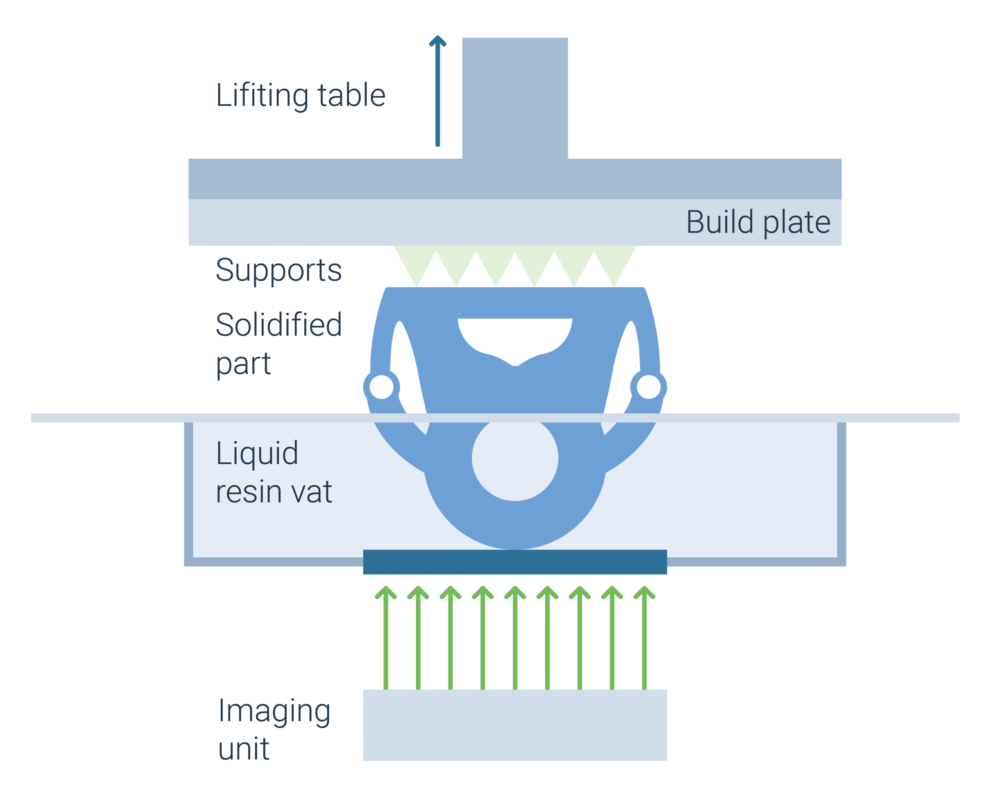Vat Polymerization
Vat Polymerization also known as Stereolithography (SLA) is the origin of the 3D printing technology. Variations of the process have been developed over the last 40 Years to increase the efficiency and the accuracy of the process. Especially the medical sector is taking advantage of the various polymerization processes.
More recently, Area-wise Vat Polymerization, known also as Digital Light Processing (DLP) has been introduced with the benefit of increased productivity.
Technology principle
How does Vat Polymerization work?
The origin of this technology is the polymerization process, in which a liquid photopolymer is cured by a UV laser to initiate the solidification. The laser selectively generates the x-y-contour of the part within the liquid resin vat. The initial layer of the component is connected to the baseplate by support structures.
After each cycle the base plate is lowered by the means of the defined layer thickness. The characteristics of the layer is dependent on the transmissibility of the photopolymer as well as the laser power and speed. Each new layer is applied by a coater, which provides an even and homogenous layer of liquid.
After the process is completed the part is removed from the vat. The generated part must be cleaned, and support structures need to be removed. Usually, the parts are also post processed with an UV curing oven to solidify the part completely.
Area-wise Vat Polymerization
Technology variant: Area-wise Vat Polymerization
Area-wise Vat Polymerization, known also as Digital Light Processing or DLP, is a modification of Vat Polymerization. Instead of selective curing of a photopolymer by laser, a UV projector is used that cures an entire layer at once. This technology was first introduced by ENVISIONTEC and its founder Al Siblani.
Nowadays this process is especially popular in the medial sector. Dental aligners, hearing aids and other customized products are produced via this technology in high numbers and take advantage of the accuracy and speed of this technology.
This process is based on the polymerization of a photopolymer. To cure the liquid polymer a UV light source or projector is used. A transparent and permeable window allows transmission of light. A series of cross-sectional images using UV light cures the resin during the up movement of the plate. This process repeats after every layer.
After the process is completed the part is removed from the vat. The generated part must be cleaned and support structures need to be removed. Usually, the parts are also post processed with an UV curing oven to solidify the part completely.
The process of solidification of the part is the actual polymerization. This process initiated by light energy is a chemical reaction, which leads to a change of aggregate state. The resin is solidified and therefore shrinkage of the dimension occurs. This shrinkage is typically in the range of 1 % to 2 % and is compensated by the data preparation software of the system manufacturer.
Read more about this topic in the Polymer Technologies Course.



